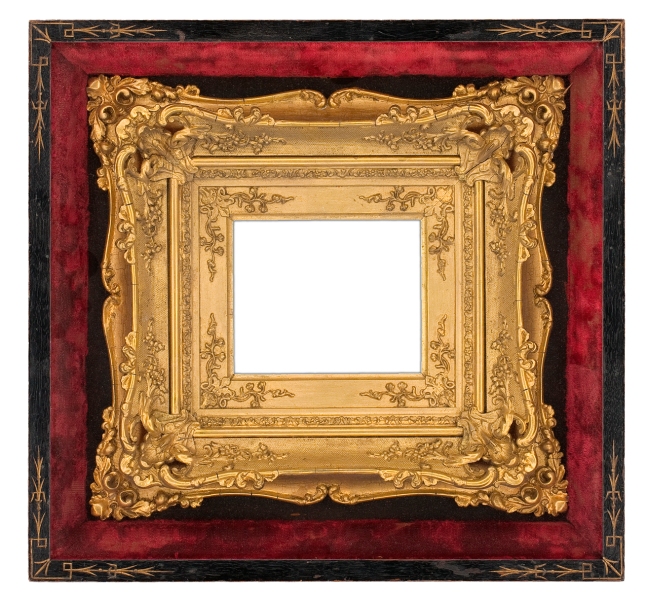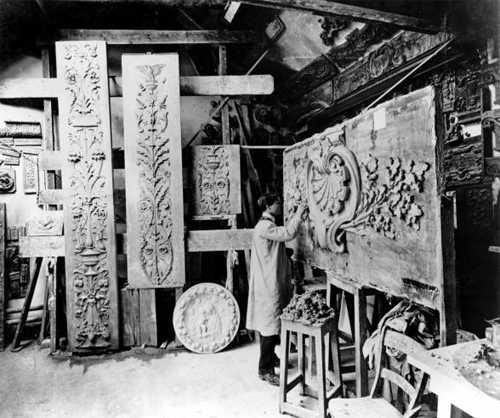This week’s frame is an American gilt composition frame from the third quarter of the 19th century. During this time, frame-making had undergone a revolution of materials, transitioning from the slow and methodical process of carving wood substrates to a faster and less expensive composition mold. Composition is a mixture of chalk or whiting, animal glue, linseed oil and resin that was used occasionally through the 17th, 18th and early 19th centuries, but was not widespread until the late 1800s.

Often referred to as plaster, composition was a positive and practical development in framemaking. Framers could duplicate the styles of earlier carved frames, capturing their opulence quickly and inexpensively. Numerous antique composition frames are now seen on paintings from important public and private collections, such as London’s National Portrait Gallery and the New York Historical Society.

To learn more about other compo frames in the Lowy collection, part of our larger collection of more than 5,000 antique frames, please call 212-861-8585 or visit www.lowyonline.com.
